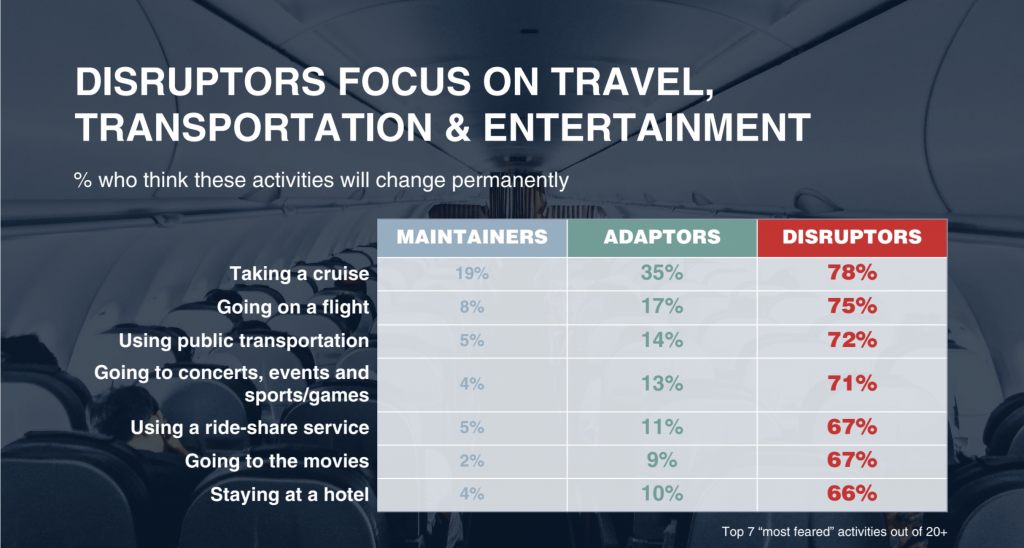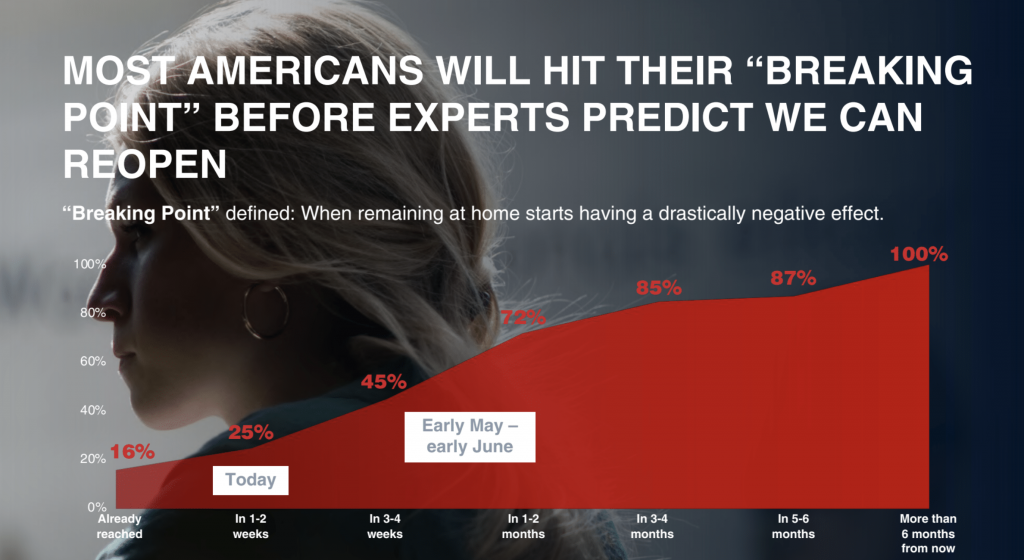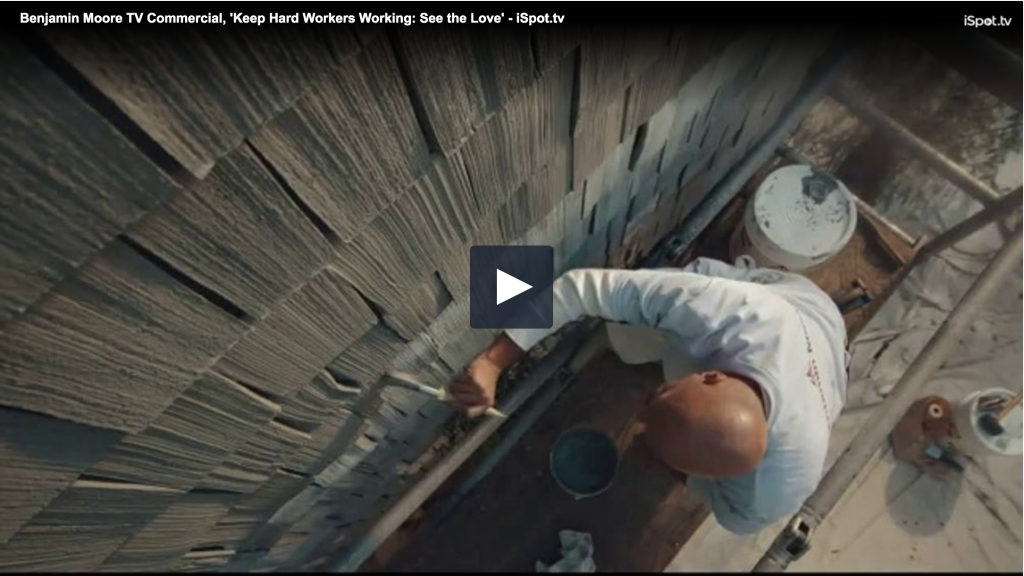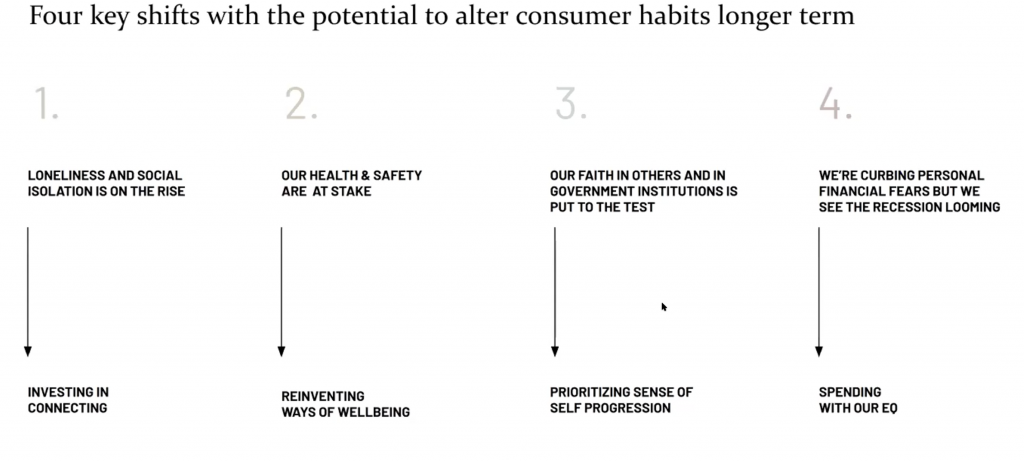Businesses Adapt to a “Transient Normal” During COVID-19
May 18, 2020
This season of social distancing has been compared to living in a snow globe, trapped within a whirl of snowflakes. Except instead of a picturesque scene of ice skaters and carrot-nosed snowmen, our world is in absolute disarray. Echoing New York Governor Andrew Cuomo’s sentiment in a recent press briefing, it’s as if someone has violently shaken our snow globe, tilting everything upside down and sideways. As a result, we’re mostly at home, craving human contact, and facing the possibility of a global recession .
As the COVID-19 pandemic wages on, businesses are shifting priorities and adopting new strategies to relate to their customers, add value, and express support. At XenoPsi, we are actively collaborating with our client-partners to create new messages and offers that speak to this era of the transient normal. We are encouraging our brands to take stock of their resources, practice active listening to understand both employee and client needs, and begin to mobilize to drive immediate results .
To get a pulse on consumer sentiment and brand expectations in the ever-evolving world of COVID-19, we’re closely monitoring consumer behavior as a way to innovate and remain ahead of the curve. Our findings have closely mirrored those produced by Kelton, a global research consultancy. Their recent study dives into this transient normal, providing brands with the context needed to measure performance and trajectory, as well as insights on how to adapt initiatives during these changing times.
Research shows that it takes on average two months for a new behavior to become a habit. In this phase of quarantine, people have begun adopting new behaviors and habits to align with this uncharted environment. This is a critical juncture for marketers, as consumers are opening their eyes and ears once again. While the economic repercussions of the virus may have individuals wary of their current financial picture, a majority of people are displaying a sense of optimism: seeing the coronavirus as an impermanent situation that will ultimately be resolved through vaccination.
When surveyed on consumer intent to continue using new outlets in a post-COVID-19 world, telemedicine and entertainment reigned supreme. Other key categories in the transient normal include: exercising at home, using online resources for teaching, digital subscriptions to publications like NYTimes.com or audiobook streaming services like Audible, and using grocery delivery services. Many consumers, however, anticipate a high level of disruption following the coronavirus, expecting permanent change within areas like public transportation, flying, concerts, and sporting events.

A majority of consumers are waiting to see what changes and progress will occur over the next several months. This personal relevancy delay represents a short window for companies to strengthen brand equity. While 78% of people believe their income will be the same, if not more, post-pandemic, over the next three months, consumers plan on spending less over 19 of 21 categories. After the 2008 recession, DIY, craft, and supporting hyperlocal businesses and supply chains became strong consumer trends. We are now seeing similar trends and mindset cropping up as a result of COVID-19 that have real potential to shape the future.
So, how does this mindset present an opportunity for brands? As consumers are reducing spend from a situational perspective (versus a need-basis), companies must tap into the relevancy of today’s normal by realigning their brand positioning and marketing strategy. Now is the time to forge authentic connections and strengthen engagement while consumers are open to it.
With fear levels continuing to increase, brands must work to identify and address the specific anxieties their customers are grappling with, which can ultimately be leveraged to devise creative, compelling, and emotionally sensitive marketing campaigns that meet today’s needs. In their report “Growing Around The Obstacles” TRIPTK highlights four key problem areas where consumers are already shifting their perspective on and creating their solutions for – and brands can tap into these trends to drive sales.
Digging into Consumer Psyche
97% of Americans surveyed said they are temporarily changing at least one of their behaviors in response to COVID-19, while 69% stated at least one behavior will remain permanently changed after COVID-19. This is historic; consumer outlook has largely been reconditioned. Behaviors haven’t been temporarily tampered with; they’ve fundamentally changed as individuals reevaluate priorities and shift expectations – and they will continue to do so into the foreseeable future.
According to Kelton, nearly three-quarters of Americans will reach their mental “breaking point” by the beginning of June if stay-at-home orders are extended into the summer months.

This type of psychological research can help brands navigate and prepare for forthcoming behavioral changes among their target consumers. Kelton recommends that brands “Consider how [to] meet vulnerable consumers where they are and meet emotional needs – giving people emotional support, hope, or little wins will make a big difference.” Brands must dig deep to convey specific messaging around the topic of community – instead of the overly-used and generalized, “we’re in this together” language. Here’s a perfect example of a Benjamin Moore advertisement focused on lifting up the specific laborers affected in their category: struggling house painters, handymen, and contractors in their community with a specific solve to encourage support:

Creating immersive experiences that humanize your brand and empathize with your community’s needs will allow you to forge a genuine connection with your audience. Emotional currency and positioning your company as a brand with a conscience is an imperative part of identifying with others and seeing the world from their perspective.
As we continue to introduce new-to-the-world brands, we are building this sentiment into their planning and launch strategy. Understanding new behaviors requires looking beyond the panic and brainstorming new ways your business can deliver timely and relevant value. Stronger, enduring bonds can be built from reducing friction and providing value on a multitude of fronts – the emotional (wellness, anxiousness), the functional (informing, time-saving, simplifying), and the life-altering circumstances (providing a sense of belonging, support, and hope).
Conclusion
As the pandemic peaks and we move towards a resolution, residual fear will continue to linger – even long after we’ve reached the light at the end of the tunnel. As we transition from our current transient state over to the new normal, brands must explore fears specific to their unique audience, providing consumers with a sense of security and validation for remaining loyal to their products or services. Brands need to also pay close attention to the next few months with new emerging consumer growth habits that are paving the way to the future.
As we continue our research into the next wave of shifting consumer behavior, we are closely monitoring brand sustainability, disruptors, and new techniques to empower businesses to a new era of success.

